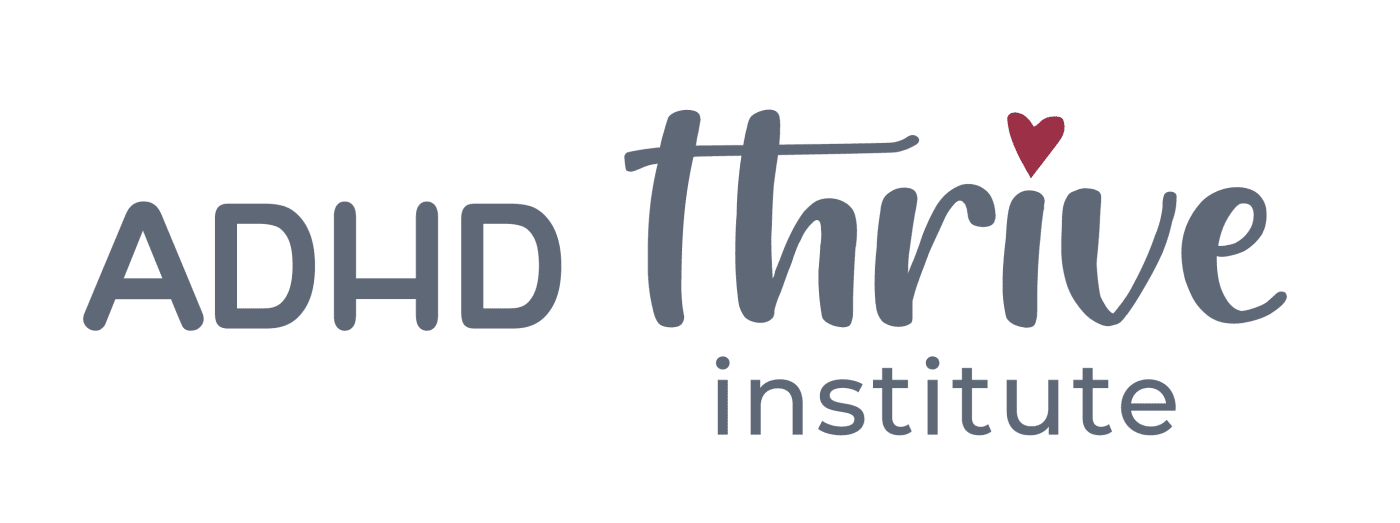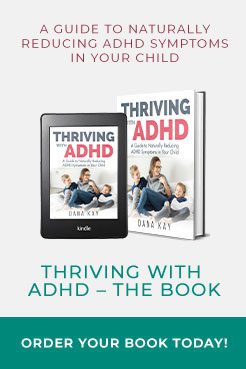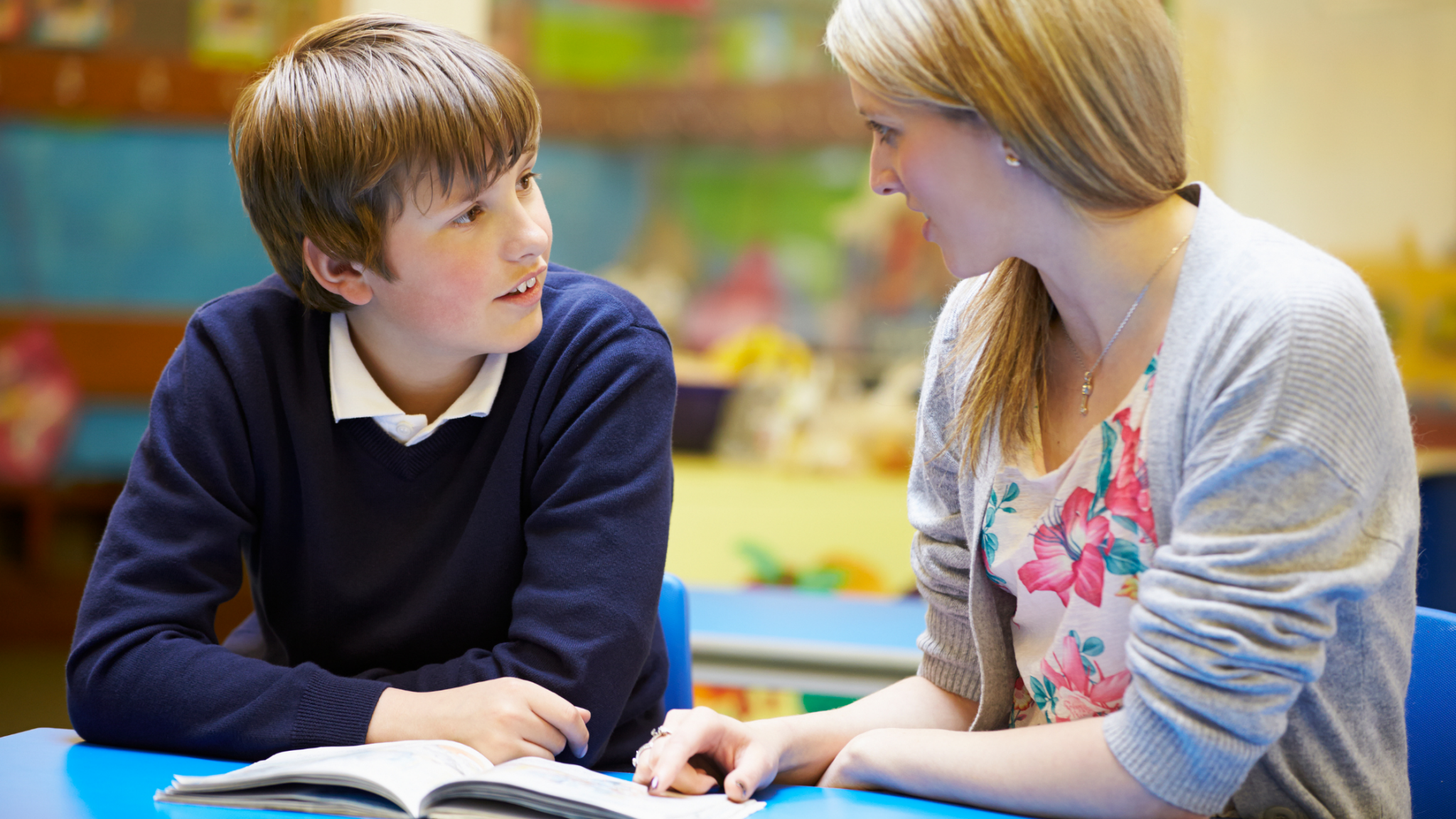Have you ever noticed a spike in negative emotions and wild behaviors after your child eats a bowl of cereal or a handful of candy?
If so, you’re definitely not alone. Many parents of kids with ADHD have shared similar stories with me, and I remember feeling this same way years ago with my own son who has ADHD.
In fact, one night about 12 years ago, I remember telling my husband, “His behavior is ruining my life!”
That particular weekend, my son had had a ton of junk food, and he was bouncing off the walls. His behavior was awful.
He used to have terrible ADHD symptoms, and a lot of them were brought on by what he ate.
When he ate junk, his behavior got so much worse.
His ADHD symptoms dictated the mood of our ENTIRE FAMILY.
➡️ He could not control or calm his mind and body.
➡️ We couldn’t walk into a store without him touching everything.
➡️ He couldn’t stay seated in a chair, even to eat breakfast.
➡️ He would have mammoth meltdowns over the smallest thing. They would last for hours sometimes and caused so much stress for all of us.
I felt like I was spinning out of control.
Every day was a challenge.
Every day was more of the same…
Refusal to follow even the most basic instructions…
Meltdowns over things that felt so small…
Arguments nonstop…
Emotional dysregulation…
And repeat…
Day after day after day.
That day, after voicing those true feelings to my husband, I realized something had to change.
I could either give up…or I could dig in and make some changes.
I decided to dig in and make some changes.
I scoured the internet, looking for something – ANYTHING – that might help us. I remember thinking that maybe if we just figured out what was CAUSING these episodes, then we could get them under control.
What I didn’t know then – but do know now – is that there are often underlying stressors that can cause or at the very least exacerbate ADHD symptoms.
One of the common things that exacerbates symptoms is artificial colors, and in this article, we’re going to dig deep into the effects of artificial colors on ADHD symptoms.
Before we look at artificial colors, though, let’s quickly look at the connection between ADHD and emotional dysregulation.
Can ADHD Cause Emotional Outbursts in Children?
When people think of ADHD, they typically think about hyperactivity. What they don’t often think about is emotional dysregulation. But, emotional dysregulation is actually VERY common among children with ADHD. One study, for instance, found that emotional control issues were present in 50% of children with ADHD[1].
Another article, in a similar way, concluded that irritability and emotional impulsivity are core features of ADHD[2]. Children with ADHD exhibit difficulties with emotional regulation, leading to greater emotionality, such as anger and frustration[3].
They can find it challenging to manage their emotions and reactions in ways that are considered typical for their age. This struggle is directly tied to the neurological aspects of ADHD, which impact areas of the brain responsible for executive functions such as emotional control and impulsivity.
[1].Mojs E, Gajewska E, Głowacka MD, Samborski W. Behavioral and Emotional Problems of Children with ADHD. European Psychiatry. 2009;24(S1):24-E398. doi:10.1016/S0924-9338(09)70631-5
[2] Junghänel, M., Thöne, AK., Ginsberg, C. et al. Irritability and Emotional Impulsivity as Core Feature of ADHD and ODD in Children. J Psychopathol Behav Assess 44, 679–697 (2022). https://doi.org/10.1007/s10862-022-09974-8
[3]Crundwell, R. M. A. (2005). An Initial Investigation of the Impact of Self-Regulation and Emotionality on Behavior Problems in Children With ADHD. Canadian Journal of School Psychology, 20(1-2), 62-74. https://doi.org/10.1177/0829573506295458
Due to these challenges, children with ADHD may experience more frequent and intense emotional outbursts than their peers. They might have significant mood swings over seemingly minor issues, and their reactions can appear disproportionately extreme.
Impulsivity, another core characteristic of ADHD, compounds these emotional challenges. It can lead them to act before thinking about the consequences of their actions. This impulsiveness isn’t limited to physical actions; it includes emotional impulsivity as well. A child with ADHD might blurt out hurtful words in anger, laugh at inappropriate times, or cry without a clear cause. They often find it hard to pause and assess their emotional responses before expressing them.
Emotional outbursts or inappropriate responses can lead to misunderstandings with peers and adults, potentially resulting in social isolation or conflict. The constant strain of trying to control these impulses and emotional swings can be exhausting for the child and their family.
Many parents describe living with a child with ADHD like walking on eggshells all the time, constantly fearing that next meltdown.
What Are the Behavior Problems Associated with Artificial Dyes?
What these parents are NOT often aware of is that not all ADHD-like symptoms are actually caused by ADHD. Some of them are caused instead by other underlying stressors. One of these underlying stressors that can create ADHD-like symptoms – both in kids with ADHD and in kids who don’t have ADHD – is artificial colors.
Now, you might be wondering, what are artificial colors, and why are they so prevalent in our food?
Artificial colors, also known as food dyes, are chemical substances developed in laboratories. They’re used in a wide array of foods to enhance appearance, making them more visually appealing.
Common examples include Red 40, Yellow 5, and Blue 1, found in everything from candies to beverages, and even in unexpected items like salad dressings and bread.
In the United States, artificial colors are usually relatively easy to identify on food labels because they have a color and a number in the name. Like Red 3 or Yellow 5, etc.
But in other countries they are often identified a bit differently, so you want to be familiar with them as well. In other countries, for instance, you want to look for ingredients like: Allura Red AC, Amaranth, Erythrosine, Ponceau SX, Tartrazine, Sunset Yellow FCF, Fast Green, Brilliant Blue FCF, Indigo Carmine, Indigotine, and also ingredients listed as E129, E123, E121, E133, etc.
Studies have shown us a concerning link between artificial additives and ADHD symptoms. For instance, a study in ‘The Lancet’ revealed that some children with ADHD exhibited increased hyperactivity after consuming foods with artificial colors and preservatives (McCann et al., 2007)[4].
Another study in the ‘Journal of Pediatrics’[5] established a connection between artificial food colors and increased hyperactivity in children, both with and without ADHD.
ADDitude magazine released an article about the effects of artificial colors on ADHD[6], sharing studies that suggest ‘food additives adversely affect a population of children with ADHD.'”
Two studies from the United Kingdom are especially interesting. In 2004, one study[7] observed healthy preschoolers after giving them either a placebo or 20 milligrams of artificial dye mix plus sodium benzoate.
The result? A significant increase in hyperactivity when the children received the actual dye and sodium benzoate. As a parent of a child with ADHD, this is alarming.
4McCann D, Barrett A, Cooper A, Crumpler D, Dalen L, Grimshaw K, Kitchin E, Lok K, Porteous L, Prince E, Sonuga-Barke E, Warner JO, Stevenson J. Food additives and hyperactive behaviour in 3-year-old and 8/9-year-old children in the community: a randomised, double-blinded, placebo-controlled trial. Lancet. 2007 Nov 3;370(9598):1560-7. doi: 10.1016/S0140-6736(07)61306-3. Erratum in: Lancet. 2007 Nov 3;370(9598): 1542. PMID: 17825405.
5Schab DW, Trinh NH. Do artificial food colors promote hyperactivity in children with hyperactive syndromes? A meta-analysis of double-blind placebo-controlled trials. J Dev Behav Pediatr. 2004 Dec;25(6):423-34. doi: 10.1097/00004703-200412000-00007. PMID: 15613992.
6 Stevens, Laura, M.Sci.“Feed Your Child’s Focus: ADHD Foods, Dyes & Attention” ADDitude magazine, Updated March 31, 2022. https://www.additudemag.com/feed-your-childs-focus-adhd-food-nutrition/ Accessed Oct 30, 2024.
7 Bateman B, Warner JO, Hutchinson E, Dean T, Rowlandson P, Gant C, Grundy J, Fitzgerald C, Stevenson J. The effects of a double blind, placebo controlled, artificial food colourings and benzoate preservative challenge on hyperactivity in a general population sample of preschool children. Arch Dis Child. 2004 Jun;89(6):506-11. doi: 10.1136/adc.2003.031435. Erratum in: Arch Dis Child. 2005 Aug;90(8):875. doi: 10.1136/adc.2005.072157. PMID: 15155391; PMCID: PMC1719942.
The second study[8], led by UK researcher Donna McCann in 2007, found that both hyperactive and non-hyperactive children experienced increased hyperactivity scores when given artificial food colors and additives. This suggests that dyes are a general public health concern, affecting not just children with ADHD but neurotypical children as well.
These findings are a wake-up call that we really need to change the foods we allow our kids to ingest. But if those scientific studies aren’t enough to convince you – Many of these artificial flavors and dyes are actually banned in many European countries, as well as Canada and Australia.
And for the ones that aren’t banned, there are restrictions on how they can be used. Food manufacturers are required to put warning labels on these products. In 2010, the European Union began requiring a warning label for foods containing artificial coloring, stating, ‘May have adverse effects on activity and attention in children.’
But in the USA, there are virtually no restrictions on using these synthetic compounds, and warning labels are not always required!
In other countries, because of these restrictions and requirements for warning labels, food manufacturers often instead choose to make foods with real ingredients.
But in the US, they use synthetic chemical mixtures in our foods that are shown to have negative effects on our children!
One of the most alarming facts about artificial food dyes is that they are present in all sorts of foods you might not expect. They are in frostings, candy, cereals, and milkshakes, but you will also find these artificial colors and flavors in foods you would never expect, even what you might consider “healthy foods!”
8 McCann D, Barrett A, Cooper A, Crumpler D, Dalen L, Grimshaw K, Kitchin E, Lok K, Porteous L, Prince E, Sonuga-Barke E, Warner JO, Stevenson J. Food additives and hyperactive behaviour in 3-year-old and 8/9-year-old children in the community: a randomised, double-blinded, placebo-controlled trial. Lancet. 2007 Nov 3;370(9598):1560-7. doi: 10.1016/S0140-6736(07)61306-3. Erratum in: Lancet. 2007 Nov 3;370(9598):1542. PMID: 17825405.
They are commonly used in soups, gravy, applesauce, beef jerky, peanut butter, popcorn, pickles, oatmeal, canned fruit, yogurt, and even bread!
Even a lot of things that are clear or white in color have dyes in them. It’s hard to believe, but clear snow cones, white gatorade, and even white marshmallows all have artificial colors in them.
The animal studies surrounding artificial colors are even more frightening.
Male rats given erythrosine (Red Number 3) had an increased risk of thyroid tumors. Red 40, Yellow 5, and Yellow 6 may contain contaminants that are known cancer-causing substances. Benzidine, 4-aminobiphenyl, and 4-aminoazobenzene are potential carcinogens that have been found in food dyes (meaning they are capable of causing cancer).
These artificial colors, additives, and flavors also contribute to inflammation, which exacerbates ADHD symptoms.
Can Red Dye 40 Cause Tantrums?
Red Dye 40, a prevalent artificial food dye found in numerous snacks, drinks, and even some medications, has been particularly implicated in exacerbating behavioral issues in children, especially those diagnosed with ADHD.
Parents and researchers alike have reported noticeable changes in children’s behavior after consuming products containing Red Dye 40. Symptoms often include increased hyperactivity, sudden onset of tantrums, and heightened aggression that seems disproportionate to the child’s usual behavior patterns.
The impact of Red Dye 40 is particularly concerning because it often targets those who are most vulnerable—children with ADHD. These children already struggle with impulsivity and self-regulation, and introducing an external factor that can heighten these challenges only complicates their ability to manage their symptoms effectively.
Red Dye 40 is found all over the food industry in products that are brightly colored and appealing to children. Some common culprits include:
✅ Fruit-flavored candies and snacks
✅ Brightly colored cereals
✅ Soft drinks and flavored beverages
✅ Dessert powders and mixes
✅ Certain brands of ice cream and frozen treats
Parents might be surprised to learn that even some seemingly innocuous foods, like packaged fruit snacks that are marketed as healthy, can contain this dye.
The presence of Red Dye 40 in everyday food items means children can be exposed to this additive frequently and in large amounts, compounding its negative effects.
Removing foods that contain this dye from your child’s diet might seem daunting given its prevalence and especially because children with ADHD are often picky eaters.
That’s why I created a simple, 3-week program.
So that you can learn exactly WHY artificial colors and flavors are so bad for kids with ADHD and HOW to swap out these foods for healthier alternatives…
You’ll even get shopping lists and guides to make it SUPER EASY to find foods without these synthetic additives!
This 21-day program is only $21.
That’s only $1 a day!!
Over these three weeks, my goal is for you to see a significant improvement for your family.
To learn more about the Dye-Free for ADHD program, click here.
How Long Does It Take for Artificial Dyes to Get Out of Your System?
Artificial dyes can linger in the body, and the length of time they remain can vary significantly from one child to another. Typically, these dyes can take anywhere from a few days to several weeks to be fully processed and excreted, depending on various individual factors. You want to ensure your child is going to the restroom regularly (1-2 times per day as a general rule of thumb) and not constipated, as this will help their bodies flush the toxins out.
Several key factors influence how quickly a child’s body can eliminate artificial dyes:
Diet: A diet rich in fibers aids in faster digestion and can help expedite the elimination of toxins and additives, including artificial dyes. Fiber-rich foods like fruits, vegetables, and whole grains help keep the digestive system running smoothly.
Hydration: Adequate water intake is crucial as it facilitates the kidneys in filtering waste and speeding up the detox process. Hydration helps dilute the concentration of dyes and flushes them out through urine.
Metabolism: A child’s metabolic rate also plays a role. Kids with a faster metabolism can process and eliminate substances like artificial dyes more quickly than those with a slower metabolic rate.
Parents can take proactive steps to help their children eliminate artificial dyes from their bodies more efficiently:
Increase Water Intake: Encourage your child to drink plenty of water throughout the day. This not only aids in hydration but also helps flush out toxins.
Focus on Whole Foods: Integrating more whole foods into your child’s diet can significantly aid in detox. Fresh fruits, vegetables, and whole grains are not only nutritious but also help cleanse the body of artificial substances.
Reduce Processed Foods: Minimize the intake of processed foods, which are often high in artificial dyes and other chemical additives. Opting for natural and organic food items reduces the overall burden of toxins your child’s body needs to process.
Regular Physical Activity: Engaging your child in regular physical activity can boost overall metabolism, helping their body process and eliminate unwanted substances more quickly. One of my favorite ways to speed up detox is to get my children jumping on a trampoline!
Consider Liver-Supportive Foods: Foods that support liver health can also assist in detoxifying the body. Include foods rich in antioxidants, such as berries, nuts, and green leafy vegetables, which help protect and promote liver function.
Detox Baths – 2-3 times a week, add magnesium flakes to a warm bath and let your child soak for at least 20 minutes.
By understanding the factors that affect how long dyes stay in the system and implementing strategies to support their elimination, parents can significantly reduce the impact of artificial dyes on their children’s health and behavior.
What Does Red Dye 40 Do To Kids with ADHD?
All artificial dyes should be avoided, but you’ve probably heard more about Red Dye 40 than any others. That’s because Red Dye 40 has been specifically linked to exacerbating symptoms in children with ADHD, manifesting in heightened hyperactivity, severe mood swings, and significant challenges with maintaining focus. These symptoms are notably more intense after consuming products containing this artificial dye.
Now, you might be wondering, why do kids with ADHD seem to be more affected by artificial dyes than their neurotypical peers?
This is because children with ADHD have differences in their neurological makeup, which can affect how their bodies process and react to certain chemicals. The presence of Red Dye 40 can disrupt the neural pathways that help regulate behavior and emotional response, making it harder for children with ADHD to control their actions and reactions effectively.
This heightened sensitivity underscores the need for careful management of diet and awareness of food ingredients to mitigate these adverse effects.
I want to tell you about a mom who told me she decided to “dip her toes in the water” with dietary changes, to see if they would help her son.
She knew I recommended families of kids with ADHD cut out 5 of the worst foods that can exacerbate ADHD symptoms. But she wasn’t ready to cut out all 5 at first. So instead, she decided to go dye-free for three weeks, cutting out all artificial colors for those 3 weeks but not making any other changes at that point in her journey.
Her family agreed to try it. After all, it was only three weeks!
After making some simple food swaps, Wendy and her husband found that their son’s behavior seemed to be significantly better. It seemed like his aggression improved, and the outbursts weren’t as frequent or severe.
But they weren’t 100% sure if this approach worked, until a few days later.
Shortly after the three weeks, their son went to a party and had some food with dye in it.
That afternoon, and for the next two days, he had reverted back to the behaviors he had before. The extreme hyperactivity and explosive outbursts had returned.
After these synthetic compounds were out of his system a few days later, he returned to being calm and stable.
It was then that Wendy realized just how big of a deal artificial colors were!
My clients have seen lots of wonderful improvements in their children’s ADHD symptoms using the methods I teach. And one of the most noticeable improvements is often after removing artificial flavors and colors!
That’s why I developed Dye-Free for ADHD – A simple 21-day guide for reducing ADHD symptoms in children.
And while it may sound simple to “just remove artificial dyes and flavors from the diet”, it is often easier said than done.
That is why I developed Dye-Free for ADHD, a short-and-sweet, to-the-point program that guides you every step of the way.
No confusion. No overwhelm. No feeling “stuck”.
After you go through this simple program, you will have all the information you need to successfully remove the artificial colors and flavors in your family’s diet!
Now, just like Wendy did, you can dip your toes in the water without having to overhaul the entire diet! These small dietary changes can make a significant difference.
Dietary Adjustments to Reduce Emotional Outbursts in ADHD Children
Now, let’s explore a few specific action steps you can put into place this week to start seeing improvements fast!
- To help those tricky ADHD symptoms, start by opting for dye-free foods. Carefully check food labels for artificial colorings, which is notorious for worsening ADHD symptoms.
Here are a few of my favorite dye-free candy brands to get you started: Yum Earth, Enjoy Life, Unreal, and Free2B. A few brands to consider that often have dye-free products include Simple Mills, Bob Red Mills, Miss Jones, Cascadian Farms Organic, Forager, Three Wishes, Larabar, Made Good, Annie’s, The Good Crisp Company, and Late July.
Always check labels. My rule of thumb is the fewer the ingredients on the packaging, the better! Ideally, you want to be able to pronounce everything on the label as well.
There are, of course, other brands and products that are dye-free, but these are some of my favorites to get you started on your journey.
- Check out our Dye-Free for ADHD $21 program to discover more about the effects of artificial colors on ADHD and for swap guides and grocery lists to help you along the way!
- Add more whole foods, healthy fats, and grass-fed or wild caught protein sources to your child’s diet. By incorporating more whole foods, fresh fruits, and vegetables into your child’s diet, you not only avoid harmful additives but also give your children micronutrients their bodies so desperately need!
- For more guidance on what to eat and what to avoid, consider listening to several Soaring Child podcast episodes, in particular Episode 5 and 6, which provide further insights into managing ADHD through diet.
In this article, we’ve discussed how artificial colors can lead to significant emotional outbursts in children with ADHD, and the transformative impact that removing these dyes can have.
Remember, even small adjustments in your child’s diet can lead to remarkable improvements in their behavior. Get started today cutting out those artificial colors, and together, we can make strides towards a healthier, happier life for your child.







